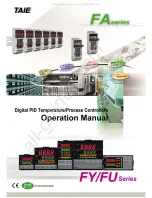
MPPT PRO-X 10A | 20A | 30A | 40A
— 26 —
6.
Others
6.1.
Protection
PV Over
Current/power
When the charging current or power of the PV array exceeds the controller’s
rated current or power, it will be charged at the rated current or power.
WARNING:
When the PV’s charging current is higher than the rated current, the PV’s
open-circuit voltage cannot be higher than the "maximum PV open-circuit voltage."
Otherwise, the controller may be damaged.
PV Short Circuit
When not in a PV charging state, the controller will not be damaged in case of
a short-circuiting in the PV array.
WARNING: It is forbidden to short-circuit the PV array during charging. Otherwise, the
controller may be damaged.
PV Reverse Polarity
When the polarity of the PV array is reversed, the controller may not be
damaged and can continue to operate normally after the polarity is corrected
.
CAUTION: The controller is damaged when the PV array is connected reversely to the
controller, and the PV array’s actual operating power exceeds 1.5 times the rated
charging power.
Night Reverse
Charging
Prevents the battery from discharging to the PV module at night.
Battery Reverse
Polarity
Fully protected against reverse battery polarity; no damage will occur to the
battery. Correct the miswire to resume normal operation.
WARNING: The controller, limited to the lithium battery characteristic, will be
damaged when the PV connection is correct, and the battery connection is reversed.
Battery Over
Voltage
When the battery voltage reaches the over voltage disconnect voltage, it will
automatically stop battery charging to prevent battery damage caused by over-
charging.
Battery Over
Discharge
When the battery voltage reaches the low voltage disconnect voltage, it will
automatically stop battery discharging to prevent battery damage caused by
over-discharging. (Any connected loads will be disconnected. Loads directly
connected to the battery will not be affected and may continue to discharge
the battery.)
Battery Overheating
The controller can detect the battery temperature through an external
temperature sensor.The controller stops working when its temperature exceeds
65
°
C and restarts to work when its temperature is below 55
°
C.
Lithium Battery Low
Temperature
When the temperature detected by the optional temperature sensor is lower
than the Low Temperature Protection Threshold (LTPT), the controller will stop
charging and discharging automatically. When the detected temperature is
higher than the LTPT, the controller will work automatically (The LTPT is 0
°
C by
default and can be set within 10 ~ -40
°
C).
Load Short Circuit
When the load is short-circuited (The short circuit current is
≥
4 times the rated
controller load current), the controller will automatically cut off the output.
Suppose the load reconnects the output five times (delay of 5s, 10s, 15s, 20s,
25s). In that case, it needs to be cleared by pressing the Load button, restarting
the controller, or switching from Night to the Day (nighttime > 3 hours).
Load Overload
When the load is overloading (The overload current is
≥
1.05 times the rated
load current), the controller will automatically cut off the output. Suppose the
load reconnects five times (delay of 5s, 10s, 15s, 20s, 25s). In that case, it
needs to be cleared by pressing the Load button restarting the controller or
switching from Night to Day (nighttime > 3 hours).
Controller
Overheating
6)
The controller can detect the temperature inside the battery. The controller
stops working when its temperature exceeds 85
°
C and restarts to work when
its temperature is below 75
°
C.
TVS High Voltage
Transients
The internal circuitry of the controller is designed with Transient Voltage
Suppressors (TVS), which can only protect against high-voltage surge pulses
with less energy. Suppose the controller is to be used in an area with frequent
lightning strikes. In that case, it is recommended to install an external surge
arrester.














































